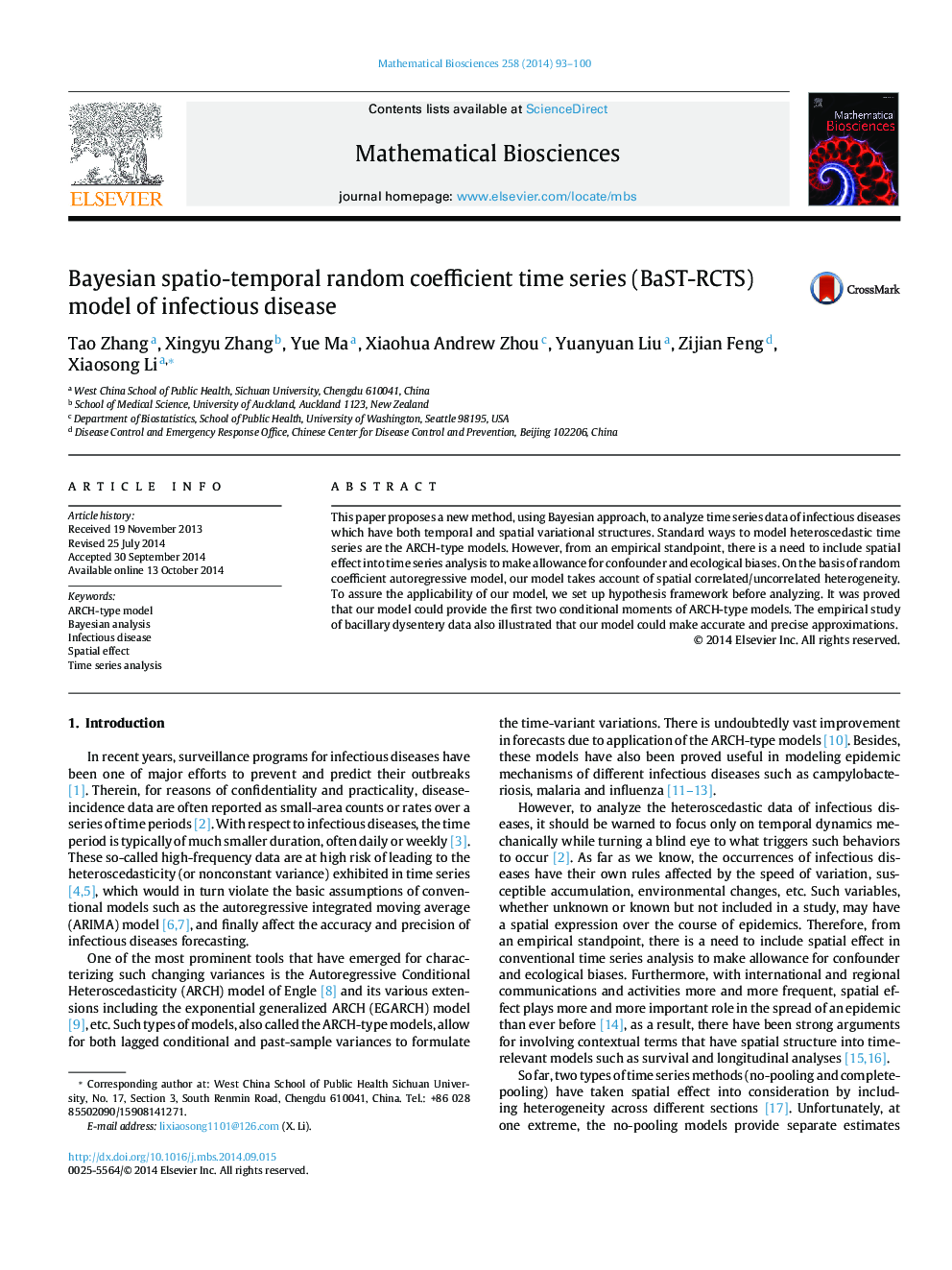| Article ID | Journal | Published Year | Pages | File Type |
|---|---|---|---|---|
| 6372025 | Mathematical Biosciences | 2014 | 8 Pages |
â¢This paper proposes a new method to analyze time series data with both temporal and spatial variational structures.â¢On the basis of random coefficient autoregressive model, our model takes account of spatial correlated uncorrelated heterogeneity.â¢We proved that our model could provide the first and second conditional moments of ARCH-type model.â¢The empirical study of bacillary dysentery data in Beijing from 2005 to 2010 illustrated that our model could make accurate and precise performances.
This paper proposes a new method, using Bayesian approach, to analyze time series data of infectious diseases which have both temporal and spatial variational structures. Standard ways to model heteroscedastic time series are the ARCH-type models. However, from an empirical standpoint, there is a need to include spatial effect into time series analysis to make allowance for confounder and ecological biases. On the basis of random coefficient autoregressive model, our model takes account of spatial correlated/uncorrelated heterogeneity. To assure the applicability of our model, we set up hypothesis framework before analyzing. It was proved that our model could provide the first two conditional moments of ARCH-type models. The empirical study of bacillary dysentery data also illustrated that our model could make accurate and precise approximations.
